Cuenca recognized as a ‘magical corner of Ecuador’ as tourism rebounds from the pandemic
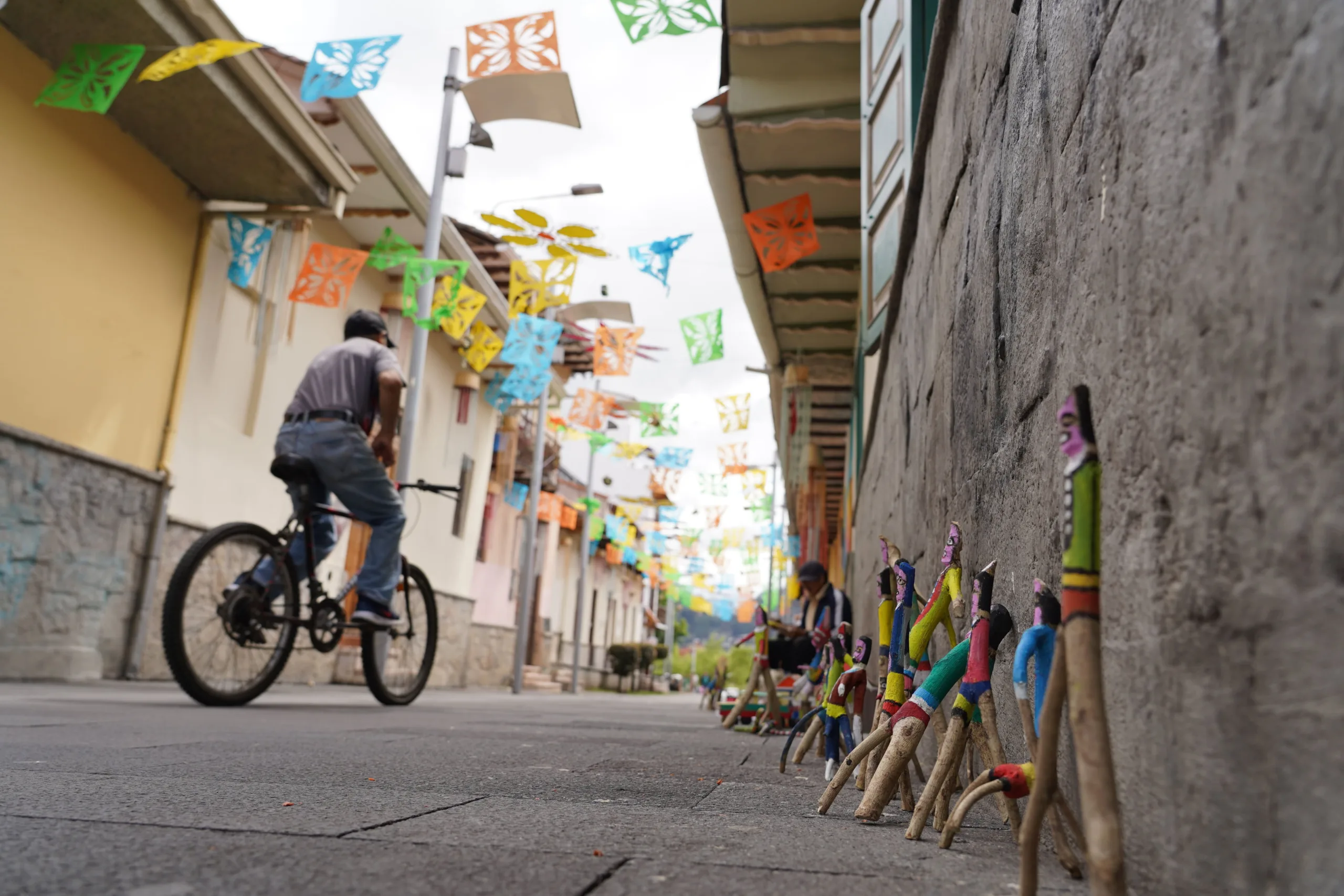
Small wood figures line Bajada del Padrón while colorful flags hang above to honor Cuenca’s recognition as a “Magic Corner of Ecuador.”
By Stephen Vargha
The visitors are back!
It could be one reason why Cuenca recently was recognized by the country as a “Rincón Mágico del Ecuador” (Magic Corner of Ecuador).
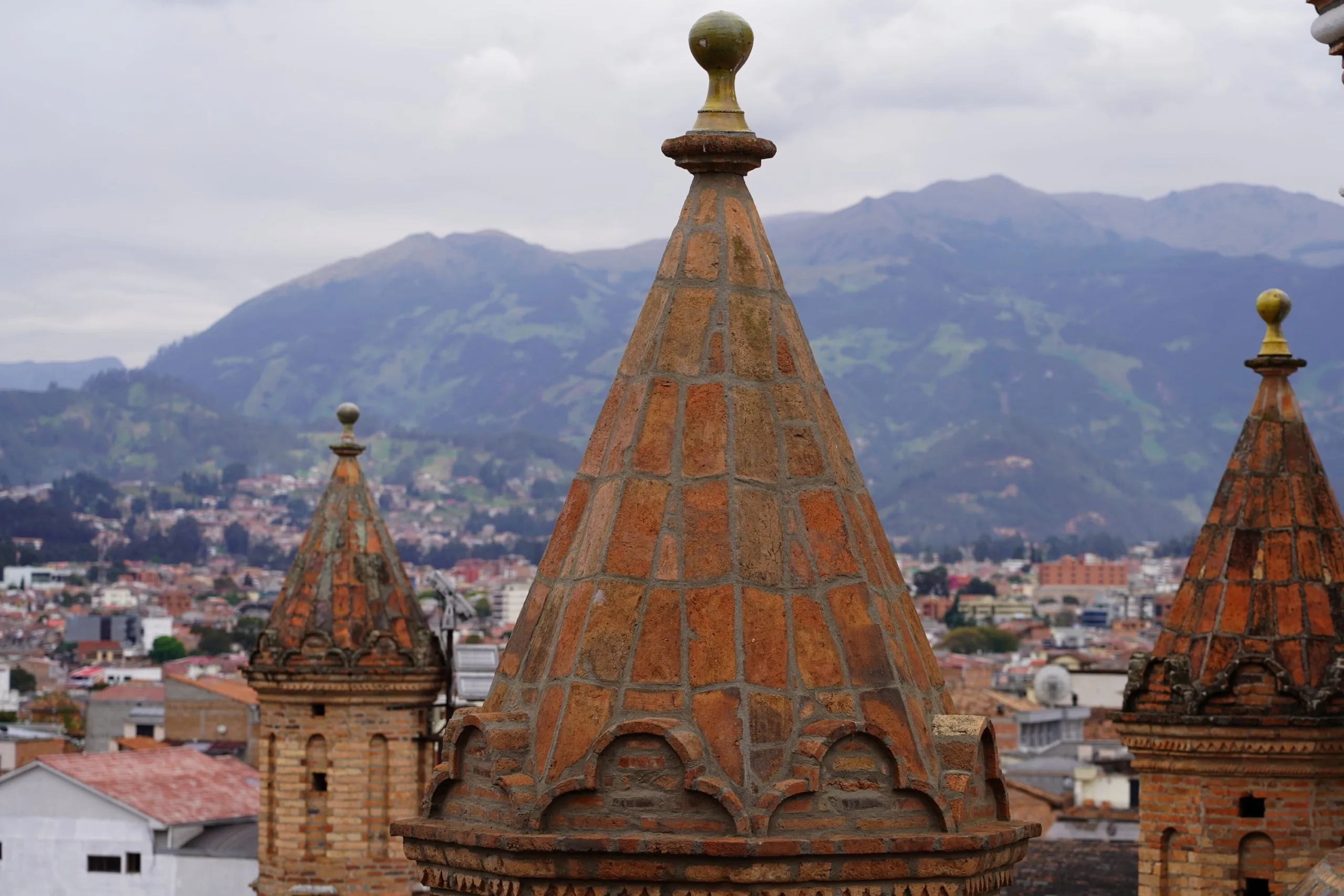
Eight churches were part of Cuenca’s 38 reasons to visit the city.
“Rincón Mágico del Ecuador is part of a bigger program for all of Ecuador,” said María Rosa Aguirre. “It is based on an area’s charm, importance, and postulate.”
Aguirre is the director for Zone 6 for the Ministry of Tourism. It is the largest tourism zone in Ecuador, encompassing 10 provinces.
“Cuenca presented to the ministry in September why it should be considered as a magic corner of Ecuador,” said Aguirre.
Niels Olsen, Minister of Tourism of Ecuador, made the decision to add Cuenca. The city joined Guaranda, Latacunga, Riobamba, Salinas de Guaranda, and Vilcabamba. Cuenca is by far the largest city to be recognized.
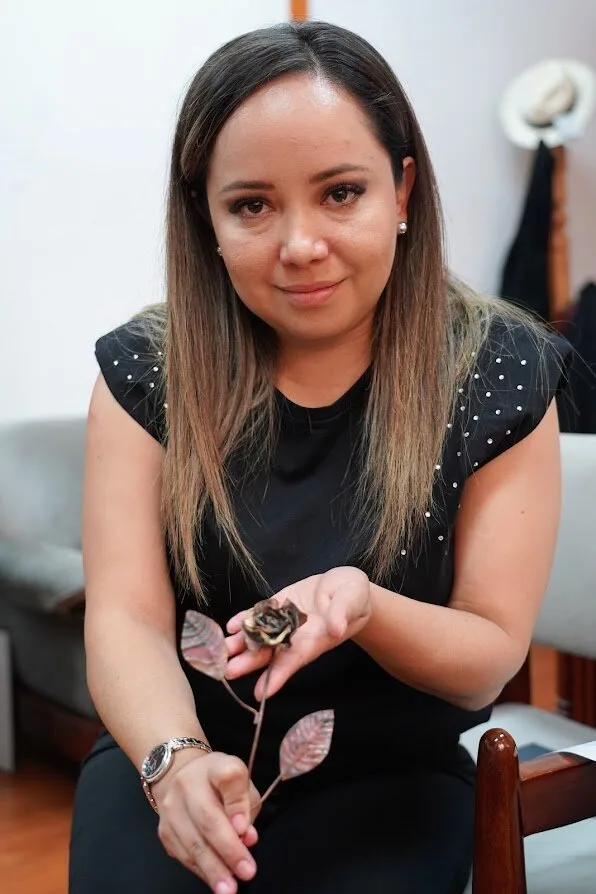
María Rosa Aguirre, the director for Zone 6 for the Ministry of Tourism, shows a piece of artwork from Cuenca. The arts are a major draw to the city.
“It is very important for Cuenca,” said Aguirre. “It is another way to promote Cuenca.
Publicity is important as tourism took a huge hit with the Covid pandemic. The number of visitors to Cuenca dropped greatly and still has not returned to pre-pandemic levels.
With a near return to normalcy, Cuenca’s visitors are once again from around the world. About 70 percent are Ecuadorians, but 30 percent are international visitors.
“The United States and Canada are about 20 percent of the visitors,” said Aguirre. “A big reason for that is the number of expats in Cuenca who have family and friends visit them.”
Weekend getaways are a big reason for the high number of Ecuadorians visiting Cuenca. Every weekend, thousands of people from Guayaquil escape the heat and humidity of their city for the cooler climate of Cuenca as well as the city’s offerings.
“Each day, people from Guayaquil spend an average of $80 per day for hotels and restaurants,” said Aguirre. “Each person ends up spending at least $160, which is very good for our economy.”
Aguirre thinks the cost of a meal is a big draw for Ecuadorian visitors. “The food in Cuenca is not as expensive as it is in Quito and Guayaquil,” said Aguirre.
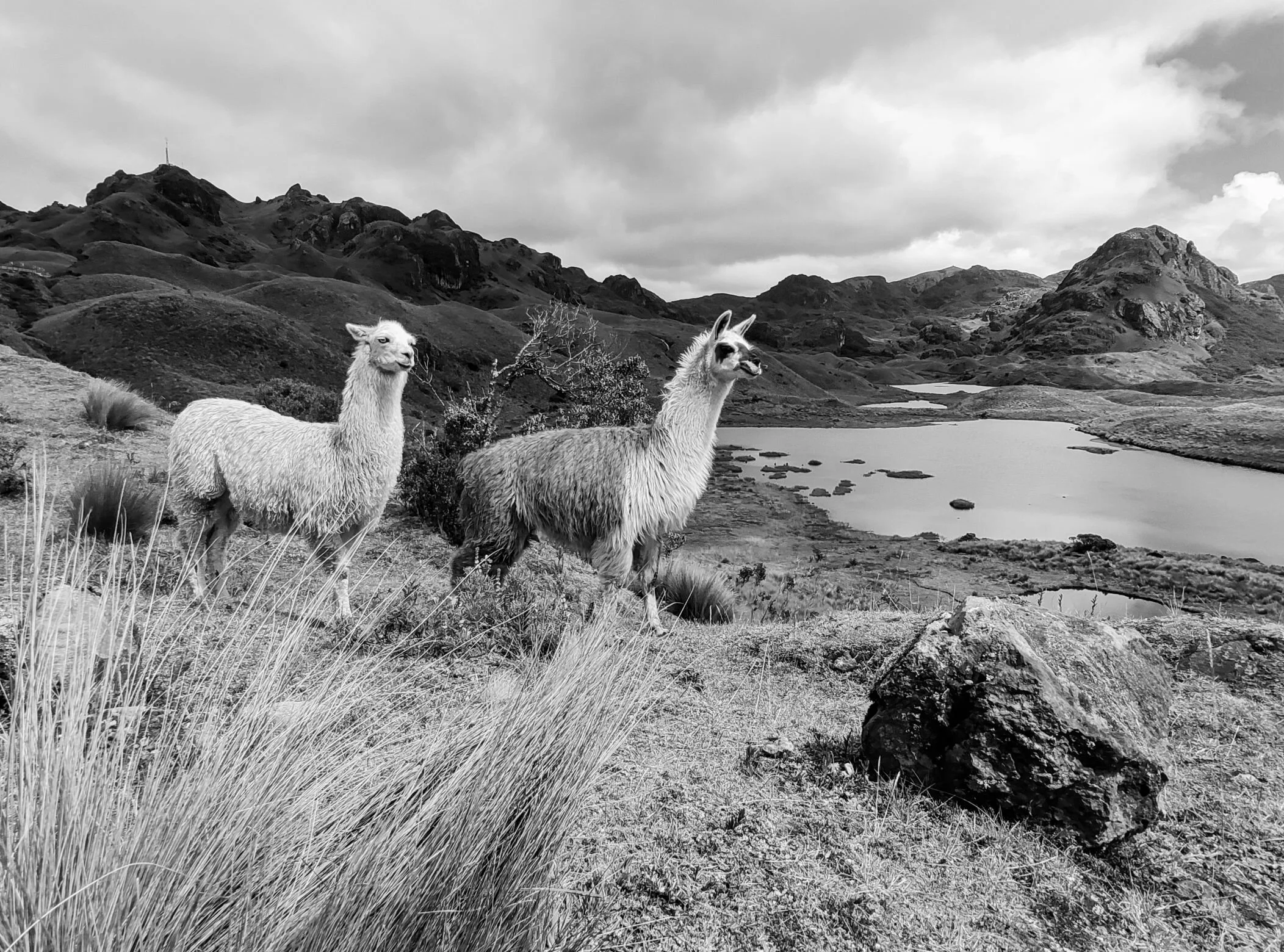
Cajas National Park is a very popular destination for visitors to Cuenca due to its uniqueness and being less than a half-hour from the city.
There is not an official institution for statistics in Cuenca, so the Ministry of Tourism has estimated the total number of visitors for the last five years:
2019: 817,597
2020: 187,557
2021: 236,000
2022: 485,530
2023 (Partial): 512,320
Those tourists brought in about $220 million annually for Cuenca’s economy prior to the pandemic.
Cuenca presented 38 places of interest to the Ministry of Tourism. Almost the entire list was in historic El Centro:
Bajada del Padrón
Bienal de Cuenca
Calle Santa Ana
Casa Azul Resto-Bar Gallery
Casa de La Lira
Casa de las Palomas
Casa de las Posadas
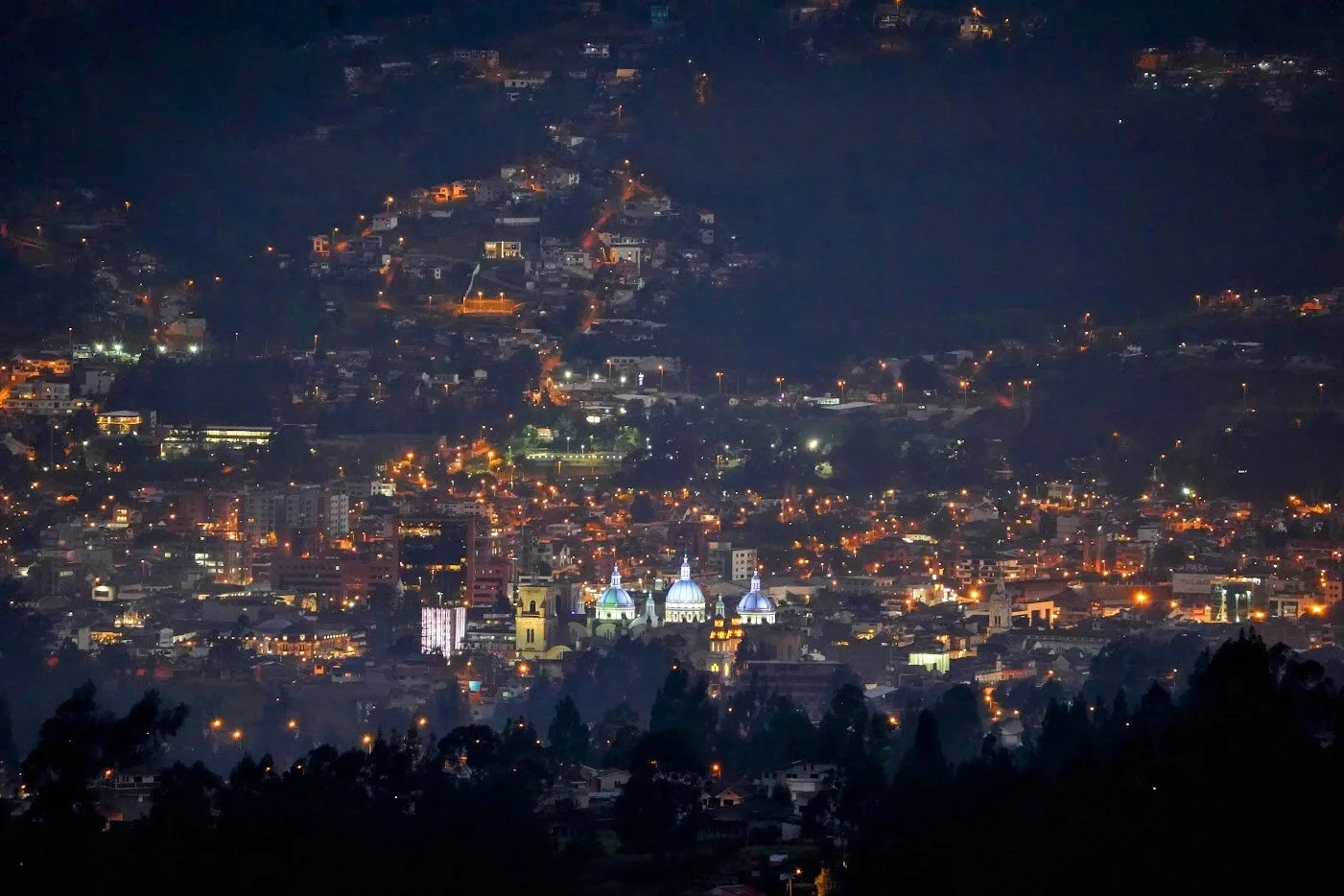
The lights of Cuenca show why the city was designated a “Magic Corner of Ecuador.”
Casa Municipal Márquez
Catedral Antigua (Old Cathedral)
Catedral de la Inmaculada (New Cathedral)
CEMUART (Centro Municipal de Artesanias)
Centro Cultural Prohibido
CIDAP (Centro Interamericano de Artesanías y Artes Populares)
Corte Provincial de Justicia
El Barranco – Río Tomebamba
Iglesia Carmen de la Asunción
Iglesia de La Merced
Iglesia de San Alfonso
Iglesia de Todos Santos
Iglesia del Cenáculo
Iglesia San Sebastián
Mercado 10 de agosto
Mirador de las Cúpulas
Museo Culturas Aborígenes
Museo de Arte Moderno
Museo de la Ciudad
Museo de las Conceptas
Museo Remigio Crespo Toral
Museo Sombrero de la Paja Toquilla
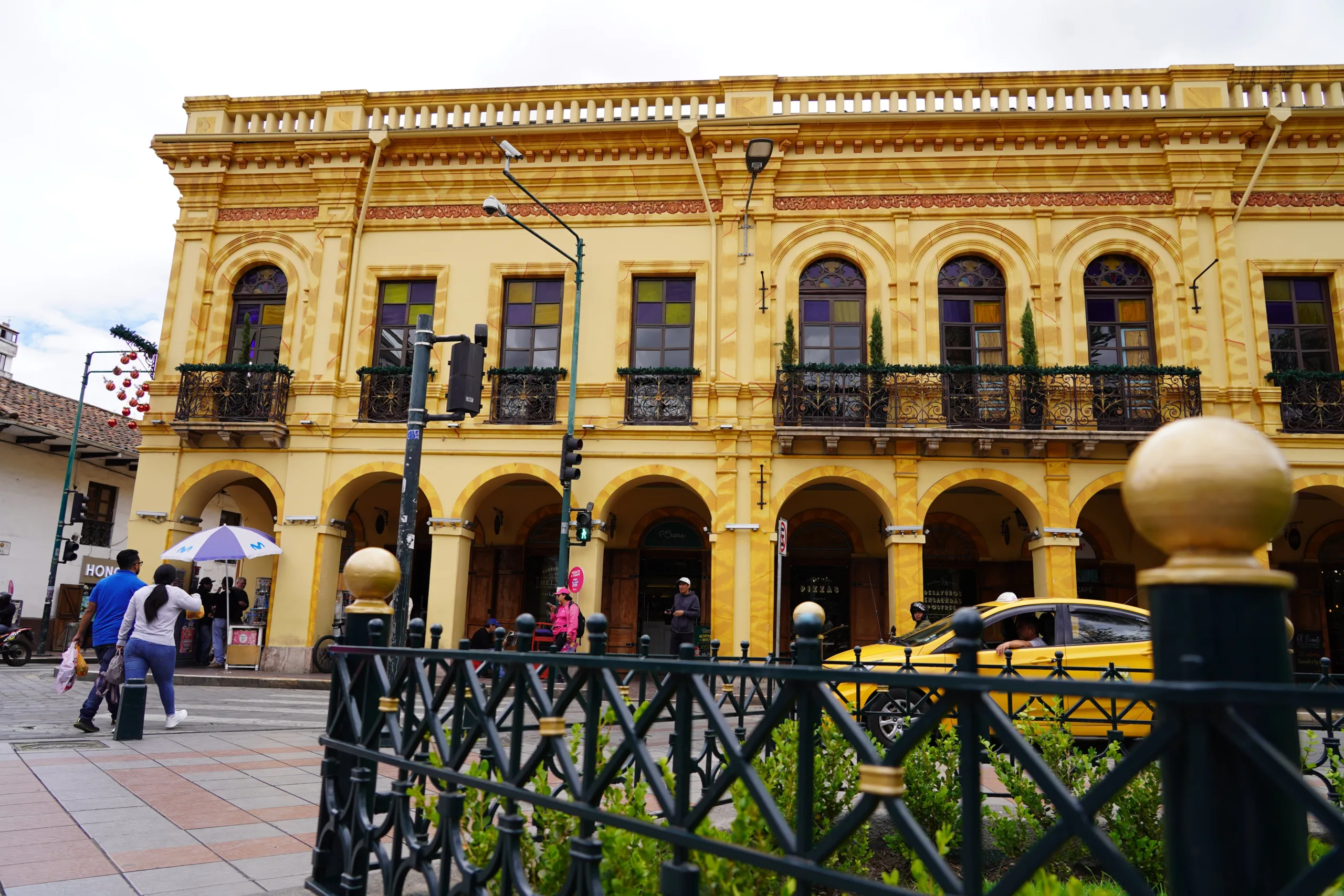
In the heart of El Centro, the renovated Mansión Matilde began the explosion of new restaurants in Cuenca.
Parque Calderón
Plaza de La Merced
Plaza de las Flores
Plaza El Otorongo
Plaza San Francisco
Plaza San Sebastián
Plazoleta Cruz del Vado
Puente Roto (Broken Bridge)
Seminario San Luis
Though Cuenca’s presentation focused mainly on El Centro, Aguirre said it goes well beyond that including its artists. Cuenca has many well-known and talented artists including internationally renowned ceramicists Eduardo Segovia and Eduardo Vega, and well-known Miguel Illescas.
“Ecuadorian hats are a very important part of Cuenca’s art culture, too,” said Aguirre. Though known as Panama Hats in the United States, Aguirre does not like to use that name as it is a misnomer.
Ecuador has had a tradition of weaving hats for over 500 years. Using the abundantly available toquilla straw, locals wove the fibers into hats for practical purposes.
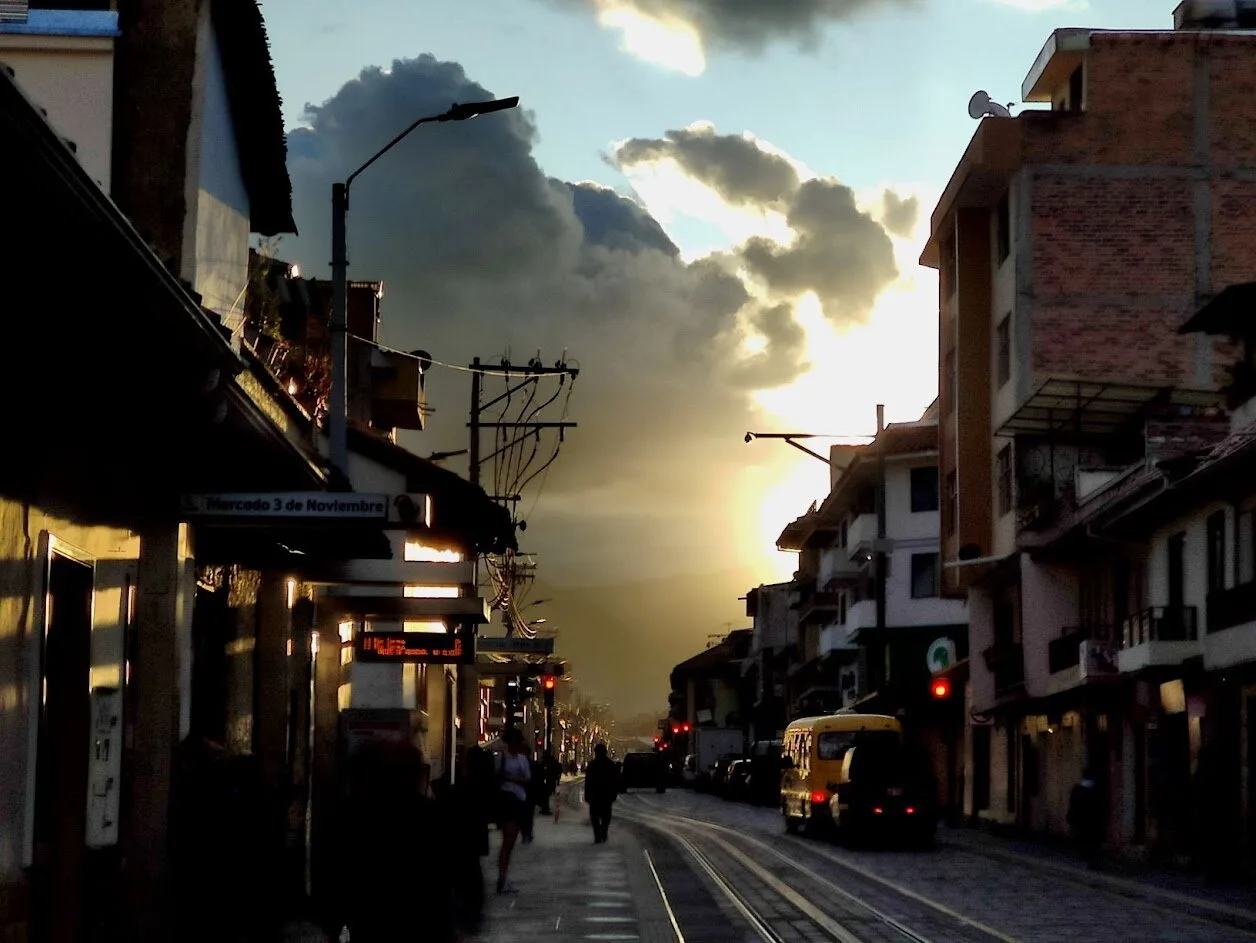
The sun setting in the distance on Mariscal Lamar. Things are looking bright for tourism in Cuenca.
The hats first became internationally famous during the construction of the Panama Canal, when Ecuadorian traders took them to Panama for the thousands of workers constructing the canal, who needed protection from the hot tropical sun.
When Americans saw photographs of President Theodore Roosevelt wearing one as he inspected the construction of the Panama Canal, it was assumed his hat came from Panama. Legend goes Roosevelt’s hat was a loan from Eloy Alfaro, the President of Ecuador.
In 2012, UNESCO declared toquilla straw hats, “Intangible Cultural Heritage of Humanity.”
Restaurants are another important reason Cuenca was recognized by the ministry as a Magic Corner of Ecuador. “We have many, many places with good food,” said Aguirre. “The yellow house (Mansión Matilde) is very nice. There are lots of restaurants in El Centro to enjoy a good meal.”
Aguirre admits it was not always that way. She attributes the exponential growth in quality restaurants and wide varied types of food to two factors.
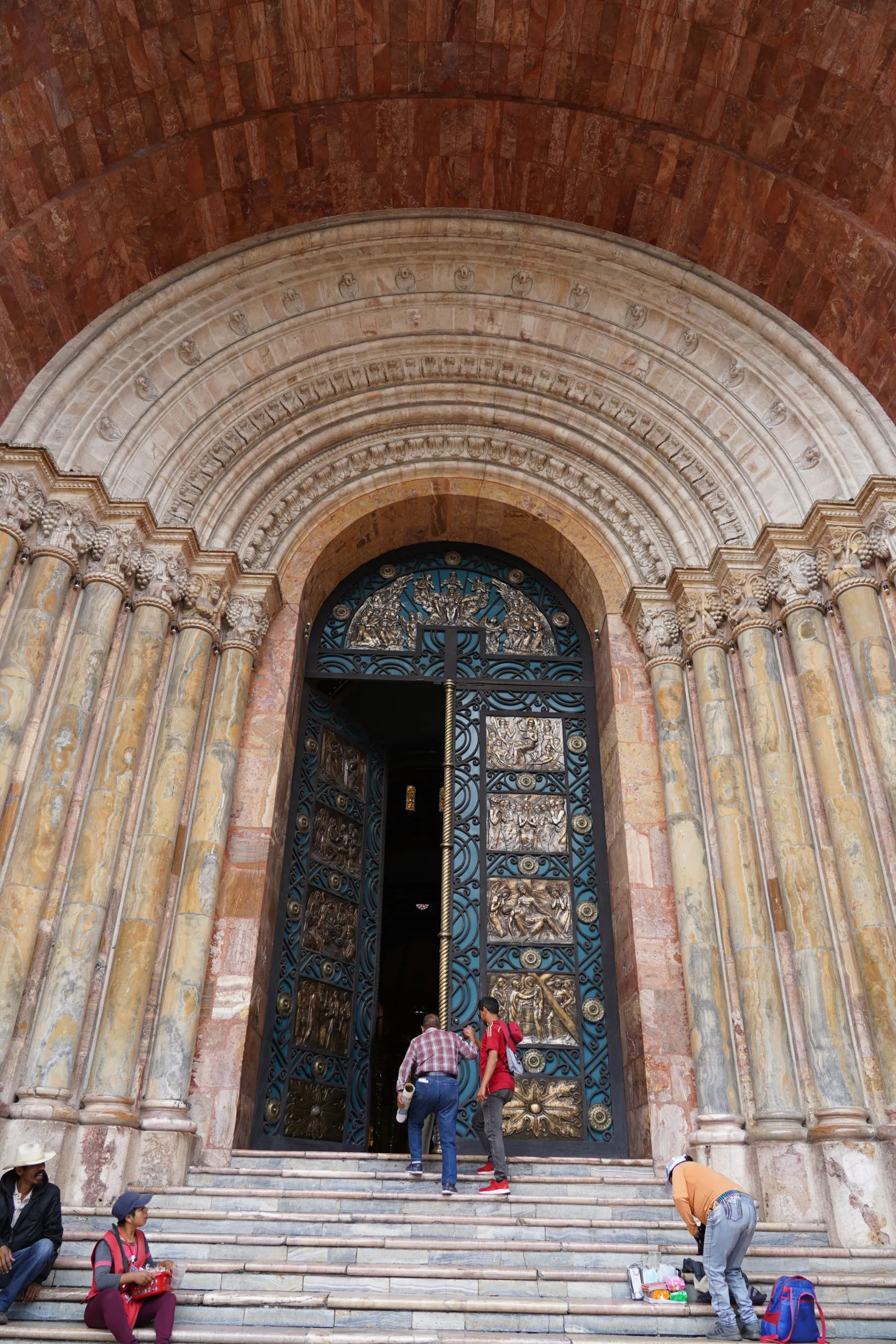
Consecrated 56 years ago, the New Cathedral is considered as one of the most important architectural attractions in Ecuador.
The first is the University of Cuenca’s relatively young gastronomy program. Many graduates stay in Cuenca and open up their own restaurants.
“The Ministry of Tourism is helping to educate people in gastronomy,” said Aguirre. “The classes are free to all people.”
Expats are the other big factor. “We have many expats here which creates competition and a variety of foods,” said Aguirre.
Two years ago, several Cuencanos were interviewed by an American journalist for his book, “Una Nueva Vida – A New Life.” They concurred with Aguirre about the influence of expats and the restaurant scene.
“Because of the expats, new foods have been introduced to Cuenca,” said Paul Wilches. “Foods we never knew about are now prevalent throughout the city.”
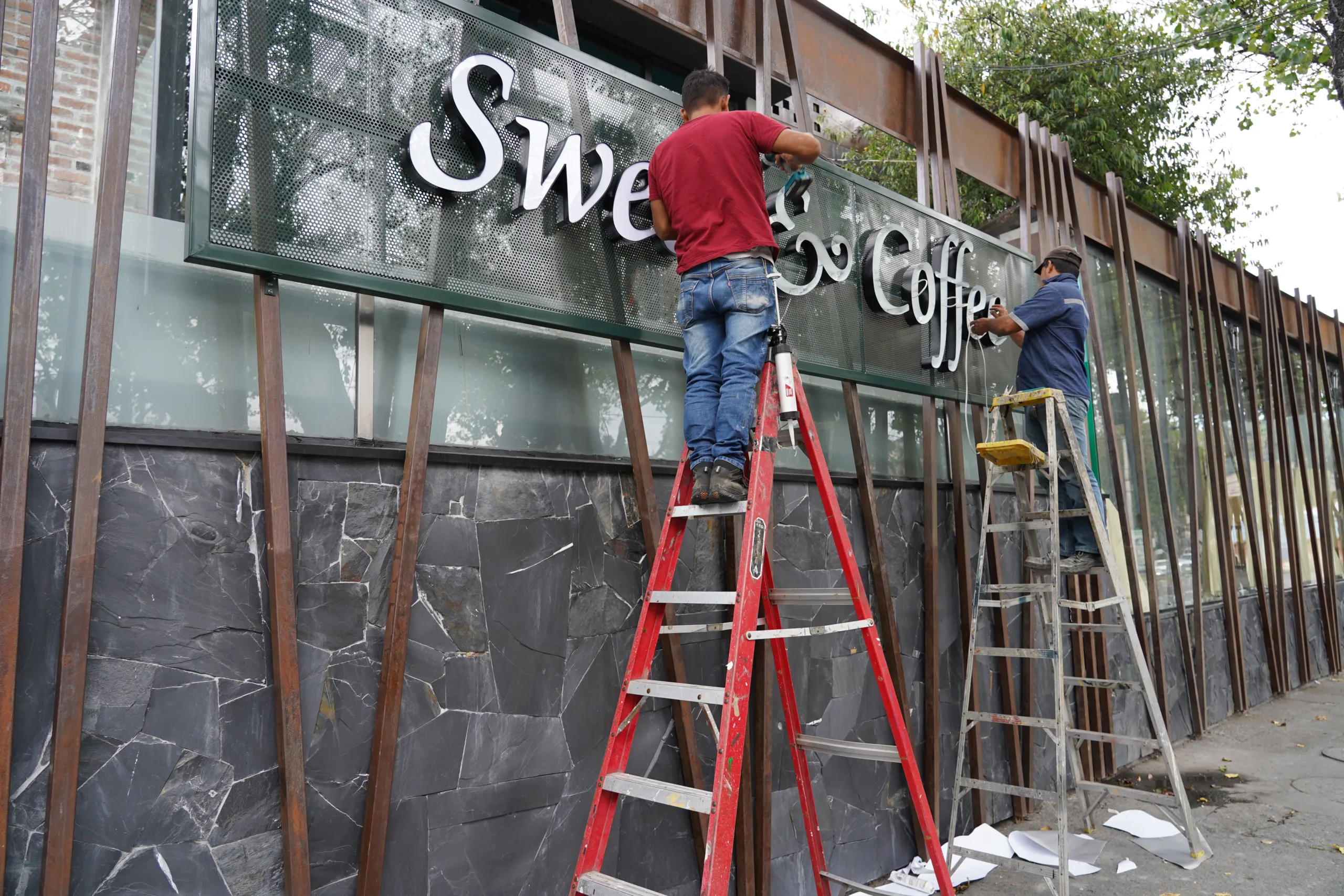
New restaurants in Cuenca are popping up all of the time, including this one on Roberto Crespo Toral.
Martin Avila is in the same camp as Wilches. “Because of the foreigners, gastronomy has blown up in Cuenca,” said Avila. “You used to only have a few lunch spots, but we have more restaurants and more choices of foods to eat because of the expats.”
Special events and celebrations help attract visitors, too. The four-day weekend for the Independence of Cuenca in November was a huge success. Hotels in Cuenca had a 95 percent occupancy rate, Aguirre said.
A good occupancy rate for a hotel is typically considered to be around 75 percent. Between 2015 and 2019, the global hotel occupancy rate was between 50 percent and 80 percent.
One would think Christmas would be big for visitors to Cuenca, but the city’s holiday celebrations and events are mainly local people, Aguirre said.

The Tomebamba River flows right by El Centro, and is very popular for visitors to Cuenca.
“We are now promoting events such as Festival de Luces (Festival of Lights) at Plazoleta de Santo Domingo and Encendido árbol Navideño (Christmas Tree Lighting) at Parque Inclusivo Circo Social,” said Aguirre. “Pase del Niño Viajero (Christmas Eve Parade) is a huge local event when most Ecuadorian families stay home, but lately, we have had tourists come to see it.”
Despite so many possibilities in Cuenca, Aguirre has her favorites. “My five top attractions are El Centro, the Tomebamba River and Broken Bridge, Cajas National Park, the artists of Cuenca, and the food in this city,” said Aguirre. “Cajas National Park is a unique place in the world due to its diversity of flora and fauna.”
In January, tourism officials will be going to Madrid, Spain for FITUR – Feria Internacional del Turismo. It is considered the world’s premier travel trade show. For five days, officials will present Aguirre’s favorite places as well as what garnered Cuenca as “Rincón Mágico del Ecuador.”
“We shall be communicating with the U.S. media and American representatives as the United States is a critical market for us,” said Aguirre. “People want to know why Cuenca is so magical.”
___________________
Photos by Stephen Vargha
Stephen Vargha’s book about Cuenca, “Una Nueva Vida – A New Life” is available at Amazon in digital and paperback formats. His blog, “Becoming Cuenca,” supplements his book with the latest information and photos by him.




















